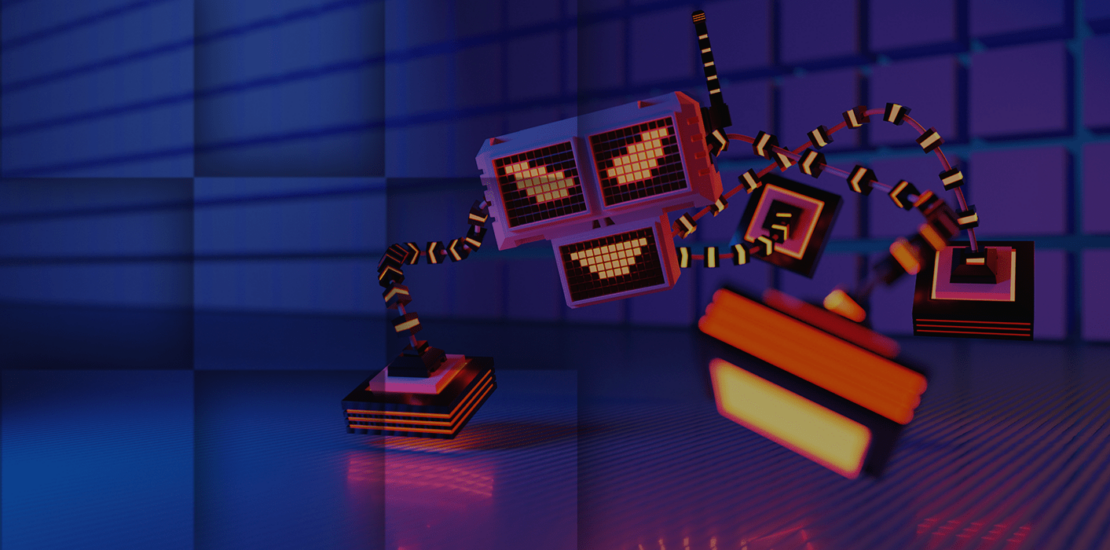- April 24, 2023
- Posted by: Ishaq Ali
- Category: Game Development

Epic Games recently announced an expansive creation toolkit for its juggernaut of a game you may know as Fortnite. This toolkit provides its users the freedom to create unique levels and experiences and publish them for Fortnite players to enjoy. Epic touted that creators with high player engagement within their creations will get a share of the revenue generated by them, thanks to their new revenue-sharing program that was also announced with this new toolkit. This sounds great and will undoubtedly open doors to highly creative experiences for the players, while also incentivizing its creators. But did you know that Epic is not the first company to do this? Roblox arrived at the gaming scene at a time when user-generated content in games was mostly uncharted territory. Fast forward to today, and Roblox has pioneered the tools and economy around the user-generated content model, making it one of the most successful ongoing gaming platforms in the process. But what makes Roblox such a success? What are the benefits of developing games in Roblox and what are its drawbacks? Let’s find the answers to these questions and more.
Contents
An Introduction to Roblox
Roblox launched in 2006, after having the platform on beta since 2004 under the name “Dynablox”. The company then decided to change the name to Roblox, which felt more appropriate, before the full launch in 2006. Roblox has since been supported by the company with various updates to the tools, in-game economy, and privacy policies making it one of the longest-running services in games. Roblox saw great player and creator engagement through the 2010s and saw a huge rise in userbase during the global pandemic in 2020 and the years after. This has resulted in the company now being home to over 150 million users and being valued at over $41 billion when it went public. So, it need not be said out loud to understand that Roblox is a platform where both creators and players find value. From a developer’s perspective, this could mean that there is great scope for engagement in their creation. But, as with all things, tech or otherwise, there are pros and cons to everything. Let’s first take a look at what is good about developing for Roblox.
Pros for Roblox Development
The large user base: Roblox has one of the largest active user bases and this alone can be a key benefit of developing games on the platform. With millions of users, the created product has a higher scope of reaching the players leading to more downloads, plays, and feedback, and ultimately more revenue.
Ease of use: Roblox’s toolkit is highly versatile and is designed to be easy to use, even for those who have little to no coding experience. The platform provides a user-friendly interface that allows developers to create games using pre-built assets, scripts, and tools. This makes it possible for anyone to create a game on Roblox without needing to know how to code, while advanced games can also be created with proper programming, albeit with fewer man-hours compared to traditional games.
Monetization: Roblox provides several monetization options for game developers, including in-game purchases, advertising, and game passes. This can help developers generate revenue from their games and make a profit. Roblox has seen several solo developers create successful games generating significant revenue making it a lucrative hobby for some and a fulltime pursuit for many.
The Community: Like most development communities, Roblox too has a robust community of developers who are always willing to help each other out. The community spans across various forums and discord channels that offer support feedback, and resources to help developers create better games.
And those are some of the top reasons why one can find it worth their while developing games on Roblox.

Cons of Roblox Development
But there are also some drawbacks that developers need to watch out for. Such as….
Limited Control: While Roblox’s platform is great and user-friendly, it ultimately is not a stand-alone game development engine like Unity, Godot, or Unreal. And thus, Roblox’s toolkit is not as robust or versatile as other game engines. While it’s easy to create a game using pre-built assets and scripts, there are limitations on what can be done with them. This can be frustrating for developers who want more control over the development process.
Limited Graphics: Roblox has come a long way since 2006 and has improved its graphics over the years. There are some beautiful and graphically intense experiences to be found on the platform. But, as with the previous point, the sheer flexibility offered by popular game engines, in terms of art style and fidelity far outmatch what Roblox currently offers. This can limit the types of games that can be created on the platform. That said, Roblox’s brand of graphics with blocky characters and cartoonish aesthetics is one that has been embraced by the players. So, it may not be as bad, at least for now. But user interests can also shift as soon as they see the next new thing in the market.
Revenue Sharing Model: Perhaps one of the biggest flaws with Roblox is its revenue-sharing model. While popular platforms like Steam and Epic Games Store use a split of 70/30 and 88/12 respectively between developers and platform holders, Roblox’s model offers a 25/75 split which makes a significant cut of the revenue generated by the games created, ending up with the platform holder. While Roblox’s toolkit is bespoke to the platform and is easy to use compared to other game engines, this can still be a bit frustrating for developers as it gets difficult for them to make a profit at this rate. This problem is further elevated by the next point.
The Sheer Number of Games on the Platform: With over a decade and a half in the market, Roblox has accumulated millions of games over time. There are over 40 million games and experiences on the platform, and it can be difficult for new games to gain traction and appear on the front page of the store. Developers will have to compete with other games for attention, downloads, and plays.

Conclusion
And there you have it. The Pros and Cons of Developing for Roblox. With any platform, a developer needs to create an audience and engage with them throughout the development process and promote their game on all relevant platforms before launch. Roblox is no different.
That said, given the very nature of the platform, one can expect some notable improvements and changes in the years to come. Beginning with its toolkit, which has come a long way since launch, it is only expected to get better over time allowing for more complex shaders, animations, and assets resulting in better looking and better playing games. The company is also focusing on newer demographics like young adults between the age of 17 -24 and is looking to adjust its policies to allow content that appeals to the demographic.
In addition to games, many successful companies are now adapting their strategies to increase their sales with Roblox. Companies like Gucci have a shop on Roblox where people can purchase Real-world Gucci items like handbags and clothes for their avatar. Also, companies are using it to launch their new products, artists are using it to release their new songs, play concerts etc.
With big players like Epic Games now entering a similar business model with Fortnite while providing a better revenue share, one could maybe hope for changes in Roblox’s revenue-sharing model too. However, these are things that may or may not be in the pipeline.
One simply cannot deny the impact Roblox has had in the gaming sphere. The platform has opened doors to creativity in ways other game engines couldn’t. With a company that thinks so differently, the future of Roblox will no doubt be very exciting.
